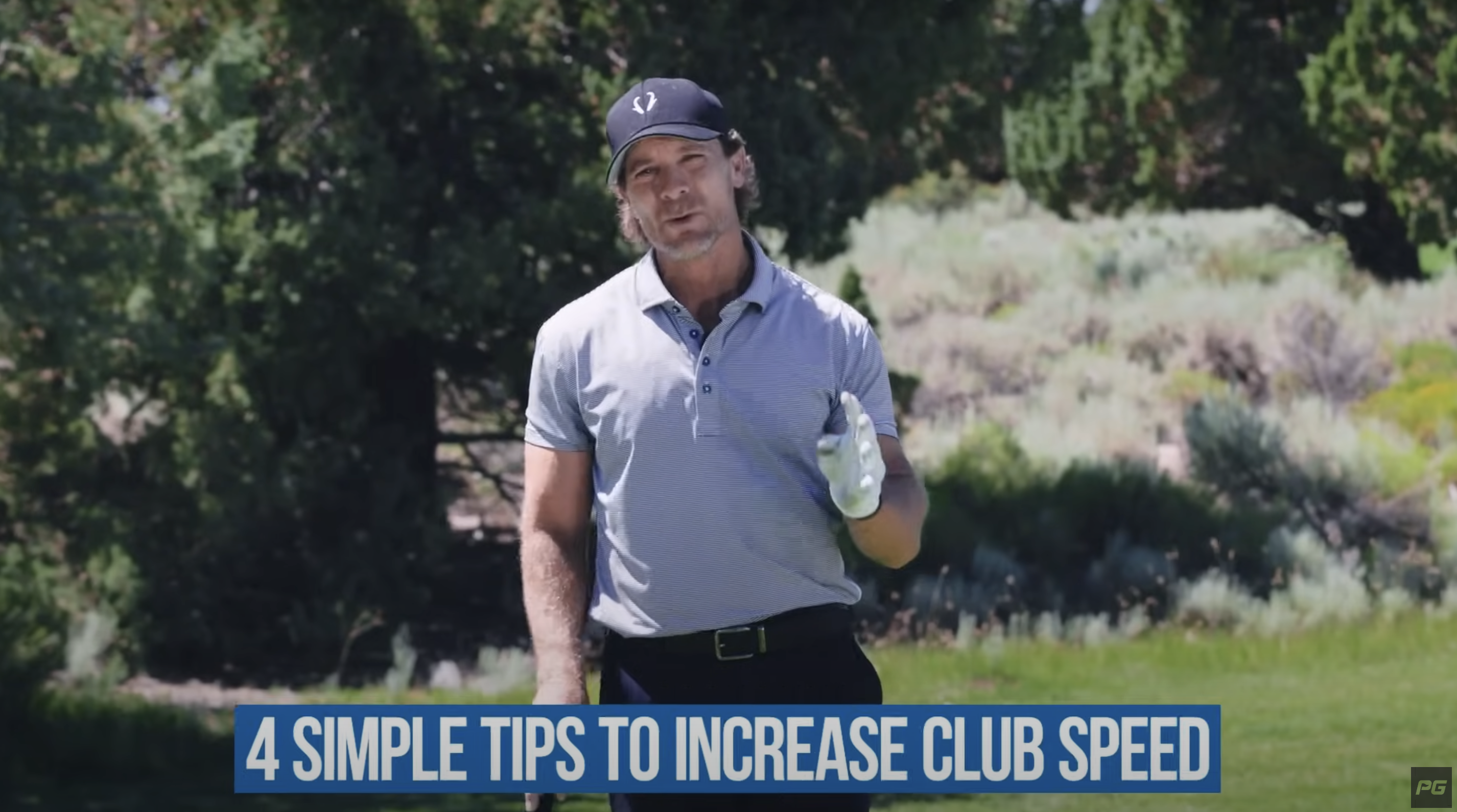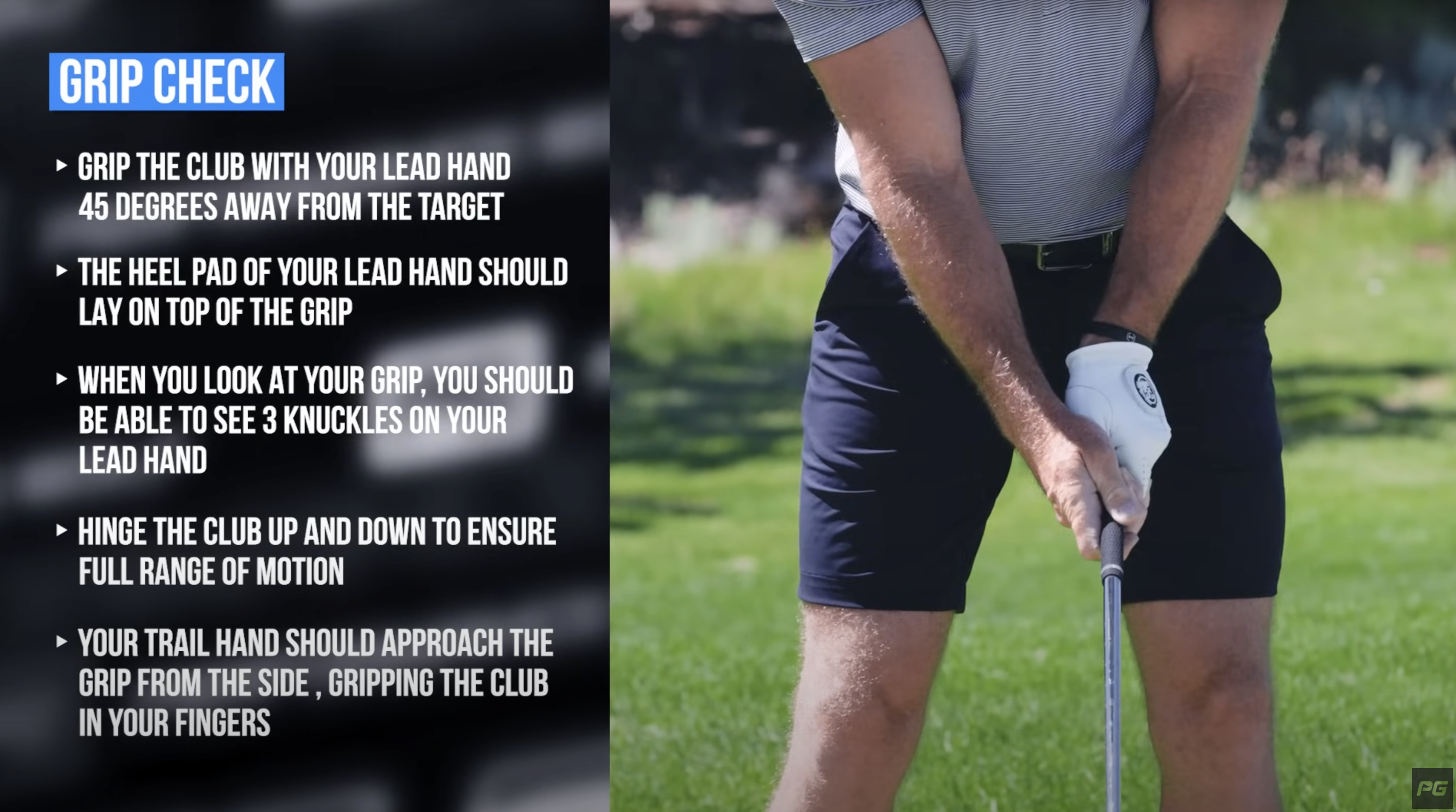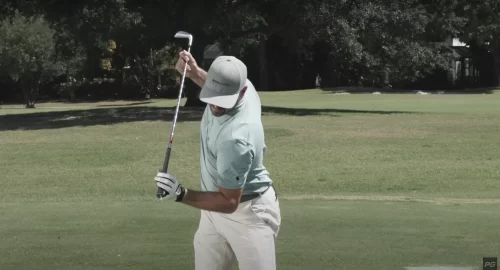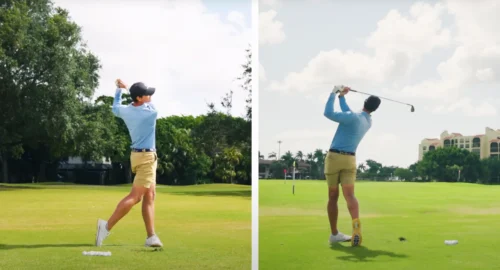
No matter where you’re at in your golf journey, chances are you’re pretty consistently chasing more distance and power off the tee. It’s one of the biggest metrics we measure when we talk about the golf swing.
However, it can be a tricky goal, because so much of achieving it hinges on one metric: clubhead speed. Today, we’re sharing four tips to instantly increase your clubhead speed (and in turn, your distance and golf swing speed) easily.
The Role of Your Hands—and Why They Matter
Golf coach Jeff Ritter reminds us of one key fact: your hands are the only connection you have to the golf club. They influence how the shaft moves, how the face rotates, and how well you can apply speed through impact.
Even with perfect body motion, hands that aren’t properly aligned will have you losing potential speed. So what’s the best golf grip?
Strengthen the Lead-Hand Grip
Many beginner golfers grip the golf club too weakly, with their lead thumb pointing straight down the shaft and the palm facing the trail palm. This “weak grip” tends to open the face and reduce ability to hinge the wrist. So what constitutes a strong grip? Let’s go over it here:
- Rotate the lead hand about 45° away from the target, seating it in the fingers rather than the palm
- When you look down, you should see one, two, or even part of the third knuckle on that hand
- After gripping, hinge the club head (lifting up and down) to check mobility through the lead wrist
- Check that your trail hand approaches the grip from the side

Trail Hand Connection for Snap
Once the lead hand’s set properly, the trail hand should be wrapped around the grip in the fingers—like holding a ball—and positioned so that its palm (or pocket) lies atop the lead thumb. This setup helps the trail hand “snap” into the swing, contributing to acceleration.
With grip and connection established, the next two moves tap into how you create and release energy using your levers.
Use the “Three Sides to a Square” Lever Concept
Imagine a square formed by your bicep, forearm (or shaft), and wrist hinge.
In the backswing, you want this square shape in your trail arm; in the follow-through, that same shape should appear in your lead arm. The more efficiently and quickly you shift from one square to the other, the greater the “whip” effect you’ll generate through impact. So keep in mind these key checkpoints of the golf swing:
- In your backswing, hinge your trail wrist and bend the elbow enough to form that square
- On the forward swing, try to mirror it in your lead arm
- The goal is speed in transitioning from one square to the other
Add Pronation (Trail Hand Rotate Over)
Pronation refers to internally rotating the trail forearm/hand through impact. When you allow the trail hand to rotate over the lead hand (so the glove hand is underneath), it closes the clubface and accelerates it.
Without pronation, many golfers see the glove hand riding too high, which slows the club head through impact.
“Braking the Inside” to Accelerate the Outside
Our final tip to get more distance and clubhead speed in the golf swing goes beyond the golf grip and hands, and taps into how your body supports speed production.
Rather than just turning freely, you should slow the “inside” of the swing to allow the “outside” to whip through. In the backswing, the lead shoulder should go under your chin, and in the follow-through, your trail shoulder should aim to replace the space where your lead shoulder was (shoulder-to-shoulder).
It’s also important to avoid excessive chest rotation and let your body apply a controlled brake so that the outer half (arms and club) accelerates through impact.
When combined—stronger grip, active lever pattern, pronation, and smart body restraint—you should feel more snap and speed almost immediately.

